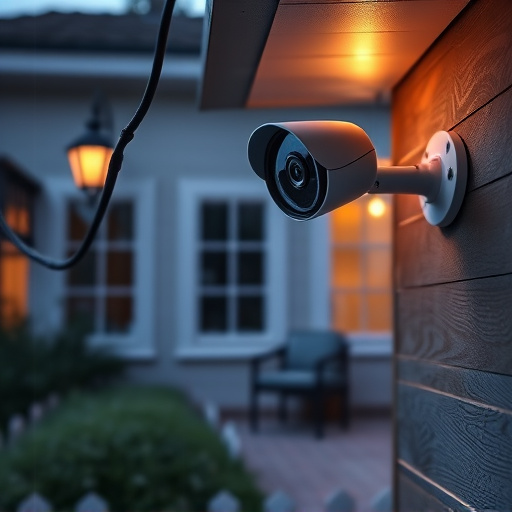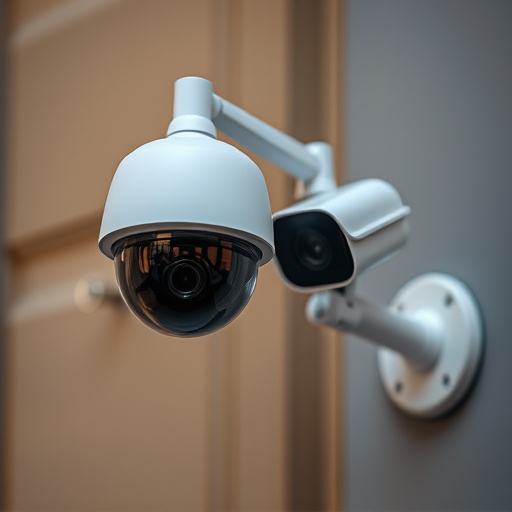Transform Your Home Office with Structured Cabling Services Pittsburgh PA Packages
Structured Cabling Services in Pittsburgh, PA, are vital for modern home offices, providing reliable…….
Welcome to an in-depth exploration of the critical infrastructure that underpins modern communication and connectivity: Structured Cabling Services in Pittsburgh, Pennsylvania. This article aims to guide readers through the intricate world of cabling systems, highlighting their significance for businesses, institutions, and residents alike within the Pittsburgh metropolitan area. We will dissect the various aspects, from its technical foundations to economic implications and future prospects, offering a comprehensive understanding of this essential service. By the end, you’ll grasp why structured cabling is not just a technical concept but a cornerstone of Pittsburgh’s digital landscape.
Definition: Structured Cabling Services refer to the design, installation, and management of high-performance networking cables and infrastructure within a building or campus environment. It involves creating a structured, organized network using standardized categories of cables and connectors, ensuring efficient data transmission and scalability.
Core Components:
Historical Context: The concept of structured cabling emerged in the 1980s as businesses demanded higher-speed data transfer rates and more flexible network configurations. Traditional unorganized cabling, often referred to as ‘rat’s nest’ systems, led to connectivity issues and inefficient network management. Structured cabling addressed these challenges by standardizing cable types, layouts, and termination practices, ensuring better performance, easier troubleshooting, and enhanced network security.
Significance in Pittsburgh: In the heart of Pennsylvania, Pittsburgh has evolved into a vibrant technological hub, home to numerous tech startups, research institutions, and established corporations. As digital transformation accelerates across industries, structured cabling services have become paramount for:
International Influence: Structured cabling services are not limited to Pittsburgh or the United States; they have a global reach. International standards like ISO/IEC 11801 and TIA/EIA-568 provide guidelines for structured cabling systems, ensuring consistency and compatibility across borders. Many countries worldwide have embraced these standards, leading to standardized cabling practices in Europe, Asia, and the Middle East.
Regional Trends:
| Region | Trends |
|---|---|
| North America | Increasing adoption of fiber optic cables for higher bandwidth requirements, particularly in data centers and enterprise networks. |
| Europe | Focus on energy-efficient cabling solutions, with a push towards using environmentally friendly materials and practices. |
| Asia Pacific | Rapid deployment of 5G networks necessitating advanced structured cabling systems to support high-speed, low-latency connectivity. |
| Latin America | Growing demand for reliable internet infrastructure, driving investments in structured cabling for schools, hospitals, and public spaces. |
Market Dynamics: The global structured cabling market exhibits steady growth, driven by the increasing demand for reliable and high-performance networking solutions. According to a 2022 report by Grand View Research, the global market size was valued at USD 17.8 billion in 2020 and is expected to expand at a compound annual growth rate (CAGR) of 6.5% from 2021 to 2028.
Investment Patterns: Pittsburgh’s tech sector, fueled by structured cabling infrastructure, attracts significant investments. Venture capital firms and private equity investors are drawn to the city’s thriving startup ecosystem, contributing to economic growth and job creation. Many businesses invest in state-of-the-art cabling systems as part of their digital transformation strategies, ensuring they stay competitive in an increasingly digital world.
Economic Impact: The structured cabling industry contributes to Pittsburgh’s economy in several ways:
Fiber Optics: One of the most significant technological advancements in structured cabling is the widespread adoption of fiber optic cables. These cables offer significantly higher bandwidth and faster data transmission rates than traditional copper cables, enabling high-speed internet connectivity over long distances. In Pittsburgh, fiber optics play a crucial role in connecting remote areas and supporting the city’s growing demand for data-intensive applications.
PoE (Power over Ethernet): PoE technology has revolutionized structured cabling by delivering both data and power over a single Ethernet cable. This advancement simplifies network management, reduces cable clutter, and eliminates the need for separate power cables, making it particularly useful for IP surveillance cameras, wireless access points, and VoIP phones.
Software-Defined Networking (SDN): SDN is transforming traditional network management by separating the control plane from the data plane, enabling software-based control over network traffic. This technology allows for more flexible and efficient network configurations, making structured cabling systems more adaptable to changing business needs.
Future Potential: The future of structured cabling lies in its integration with emerging technologies like 5G, IoT (Internet of Things), and cloud computing. As these technologies demand higher bandwidth, lower latency, and enhanced security, structured cabling systems will need to evolve to meet these requirements. Advancements in cable materials, connectors, and management software will play a vital role in shaping the future of this industry.
Regulatory Frameworks: Structured cabling services are subject to various local, state, and national regulations designed to ensure safety, security, and compatibility. In the United States, organizations like the National Fire Protection Association (NFPA) and the American National Standards Institute (ANSI) set standards for cable installation and management. The Federal Communications Commission (FCC) also plays a role in regulating telecommunications infrastructure, including structured cabling systems.
Licensing and Permits: Pittsburgh, like many cities, requires permits and licenses for certain aspects of structured cabling work, especially when involving public rights-of-way or critical infrastructure. These regulations ensure that installations comply with safety and technical standards, protecting the city’s citizens and assets.
Data Security and Privacy: With increasing cyber threats, policies related to data security and privacy have become more stringent. Structured cabling service providers must adhere to regulations like the General Data Protection Regulation (GDPR) in Europe and the California Consumer Privacy Act (CCPA) in California, ensuring secure handling and protection of customer data during cable installation and management.
Main Challenges:
Proposed Solutions:
Case Study 1: University Campus Network Upgrade
Setting: A large research university in Pittsburgh sought to upgrade its aging campus network to support modern teaching and research needs.
Solution: The project involved replacing the existing copper cabling with a fiber optic-based structured cabling system, implementing PoE for IP cameras and access points, and employing SDN for network management.
Outcome: The upgraded network provided faster connectivity, improved security, and easier management. Students and faculty experienced enhanced online learning capabilities, and researchers could collaborate more effectively, leading to increased academic productivity.
Case Study 2: Data Center Expansion
Background: A major technology corporation in Pittsburgh planned an expansion of its data center to accommodate growing cloud-based services.
Approach: The company partnered with structured cabling specialists to design and install a high-performance, scalable cabling system using the latest fiber optic technologies.
Results: The new cabling infrastructure supported the data center’s expanded capacity, enabling the corporation to offer more robust cloud services. The efficient design also facilitated future growth, ensuring the facility remained competitive in the rapidly evolving tech landscape.
Case Study 3: Smart City Infrastructure
Context: Pittsburgh has been a pioneer in smart city initiatives, aiming to enhance urban living through technology. One project involved deploying structured cabling systems for a city-wide sensor network to monitor traffic flow, air quality, and public safety.
Implementation: The structured cabling network provided the backbone for connecting various sensors and devices, ensuring reliable data transmission and real-time monitoring.
Impact: The smart city initiative improved urban management, allowing for more efficient traffic control, enhanced public safety features, and better environmental monitoring. The structured cabling system played a critical role in enabling these technologies to work seamlessly together.
Emerging Trends:
Growth Areas:
Strategic Considerations:
Structured cabling services are more than just the laying of cables; they are the invisible threads that connect our modern world. In Pittsburgh, these services have played a pivotal role in fostering innovation, supporting economic growth, and enhancing the quality of life for residents. From reliable internet connectivity to advanced network security, structured cabling is the foundation upon which digital transformation rests.
As we look ahead, the future of structured cabling lies in its ability to adapt to emerging technologies, embrace sustainability, and ensure data security. By addressing challenges proactively and leveraging new advancements, Pittsburgh can maintain its position as a tech hub while setting a global standard for structured cabling excellence. The city’s digital landscape will continue to evolve, powered by efficient, secure, and scalable cabling systems, ultimately shaping a brighter, more connected future.
Q: What is the difference between twisted-pair and fiber optic cables?
A: Twisted-pair cables use pairs of copper wires twisted together to reduce electromagnetic interference. They are suitable for shorter distances and slower data rates. Fiber optic cables, on the other hand, transmit data using light pulses through glass or plastic fibers, offering significantly higher bandwidth and longer-distance capabilities.
Q: How do I know if my building needs a structured cabling upgrade?
A: If your building is experiencing slow internet speeds, frequent connectivity issues, or difficulty supporting new technologies, it might be a good indication that an upgrade is needed. Regular network performance evaluations can help identify areas for improvement and the potential benefits of a structured cabling upgrade.
Q: Are there any environmental considerations in structured cabling?
A: Yes, the industry is increasingly focusing on sustainability. Using recycled materials, implementing energy-efficient practices during installation, and choosing cable types with lower environmental impacts are some ways to make structured cabling more eco-friendly.
Q: How can structured cabling improve network security?
A: Structured cabling systems can enhance security through organized layouts that facilitate better access controls and surveillance. Using secure connectors, encrypting data transmission, and implementing network segmentation are effective strategies to protect sensitive data and prevent unauthorized access.
Q: Can structured cabling support the latest 5G technology?
A: Absolutely. While 5G networks require significant infrastructure upgrades, structured cabling systems can be adapted to meet these new demands. Future-proofing your cabling by choosing suitable fiber types, connectors, and management software will ensure compatibility with 5G technologies.

Structured Cabling Services in Pittsburgh, PA, are vital for modern home offices, providing reliable…….

Structured Cabling Services in Pittsburgh, PA, create a powerful network framework for modern office…….